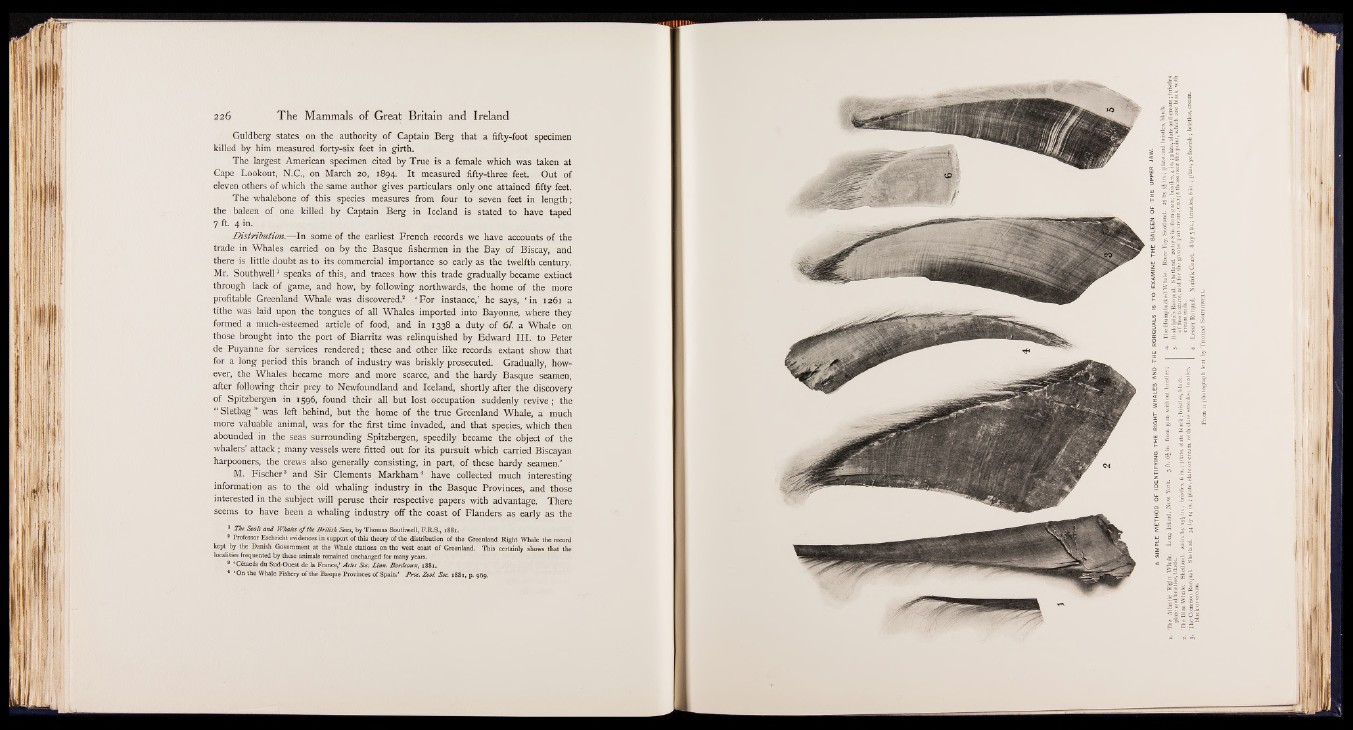
Guldberg states on the authority of Captain Berg that a fifty-foot specimen
killed by him measured forty-six feet in girth.
The largest American specimen cited by True is a female which was taken at
Cape Lookout, N.C., on March 20, 1894. It measured fifty-three feet. Out of
eleven others of which the same author gives particulars only one attained fifty feet.
The whalebone of this species measures from four to seven feet in length ;
the baleen of one killed by Captain Berg in Iceland is stated to have taped
7 ft. 4 in.
Distribution.— In some of the earliest French records we have accounts of the
trade in Whales carried on by the Basque fishermen in the Bay of Biscay, and
there is little doubt as to its commercial importance so early as the twelfth century.
Mr. Southwell1 speaks of this, and traces how this trade gradually became extinct
through lack of game, and how, by following northwards, the home of the more
profitable Greenland Whale was discovered.2 ‘ For instance,’ he says, ‘ in 1261 a
tithe was laid upon the tongues of all Whales imported into Bayonne, where they
formed a much-esteemed article of food, and in 1338 a duty of 61. a Whale on
those brought into the port of Biarritz was relinquished by Edward III. to Peter
de Puyanne for services rendered ; these and other like records extant show that
for a long period this branch of industry was briskly prosecuted. Gradually, however,
the Whales became more and more scarce, and the hardy Basque seamen,
after following their prey to Newfoundland and Iceland, shortly after the discovery
of Spitzbergen in 1596, found their all but lost occupation suddenly revive ; the
“ Sletbag” was left behind, but the home of the true Greenland Whale, a much
more valuable animal, was for the first time invaded, and that species, which then
abounded in the seas surrounding Spitzbergen, speedily became the object of the
whalers’ attack ; many vessels were fitted out for its pursuit which carried Biscayan
harpooners, the crews also generally consisting, in part, of these hardy seamen.’
M. Fischer8 and Sir Clements Markham4 have collected much interesting
information as to the old whaling industry in the Basque Provinces, and those
interested in the subject will peruse their respective papers with advantage. There
seems to have been a whaling industry off the coast of Flanders as early as the
1 The Seals and Whales o f the British Seas, by Thomas Southwell, F.R.S., 1881.
* Professor Eschricht evidences in support of this theory of the distribution of the Greenland Right Whale the record
kept by the Danish Government at the Whale stations on the west coast of Greenland. This certainly shows that the
localities frequented by these animals remained unchanged for many years.
8 ‘Cétacés du Sud-Ouest de la France,’ Actes Soc. Linn. Bordeaux, 1881.
* ‘ On the Whale Fishery of the Basque Provinces of Spain.’ Broc. Zool. Soc. 1881, p. 969.